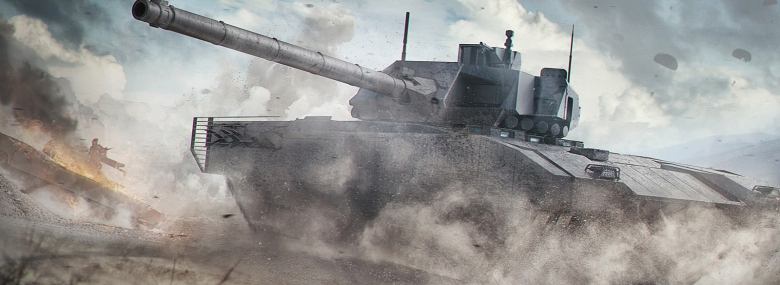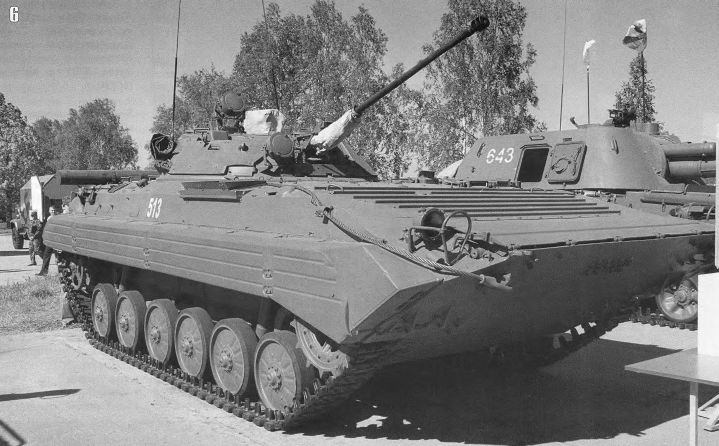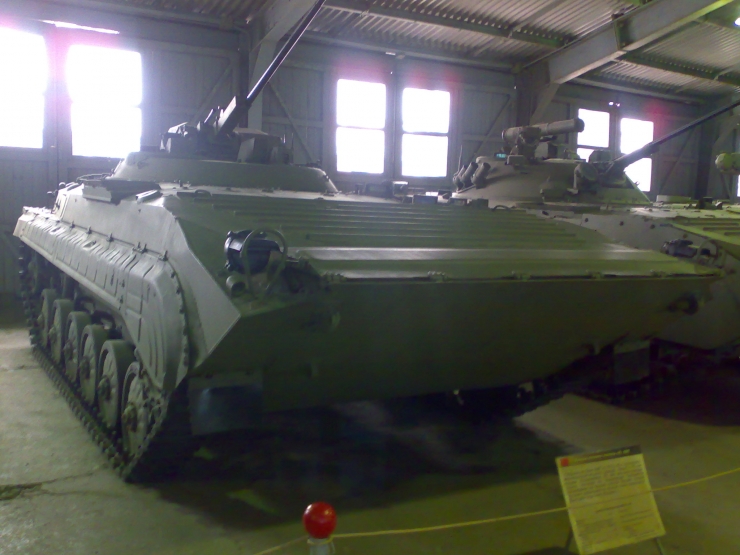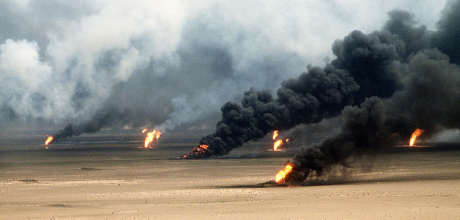
The KMZ BMP-1 successor design came to be under the leadership of B.N.Yakovlev. His proposal, designated Object 675, was to be equipped with a two-man turret and an automatic 30mm cannon paired with a 7,62mm machinegun. In order to knock out enemy armored targets, the vehicle was to be also armed with one 9K111 „Fagot“ anti-tank guided missile launcher (NATO codename: AT-4 Spigot) or with the 9M113 „Konkurs“ (NATO codename: AT-5 Spandrel) system. The guidance system for the missiles was to be – unlike in the improved BMP-1P (Object 765) - located inside the hull so the operator wouldn’t have to be unprotected while controlling the missile.

The work on the design began in 1972 and the deadline was practically impossible: three months. This was caused again by GRAU stating that it’s more than enough time since technically the entire project is just a „modernization“ and not an entirely new armored vehicle project (which it – in reality – practically was due to the amount of required modifications). The prototype was to be built within a year – and while the preliminary project was indeed ready on time, to actually build the vehicle was another matter entirely.
Since GRAU was still insisting on their preferred weapon (the 73mm Zarnitsa) and wanted to have nothing to do with the development of a new 30mm cannon in order not to have to admit their own mistake, B.N.Yakovlev was forced to look for help elsewhere, contacting the air force design bureau CKB-14 commanded by A.G.Shipunov and V.P.Gryazev and asking them whether they’d develop the automatic gun for him. In order to keep the deadline for the project, the gun would have to be ready in six months – this deadline was met with very negative reaction, V.P.Gryazev stated that developing a gun that fast was unheard of and with proper testing it would take at least five years. In the end however, Yakovlev managed to convince him since there was an ongoing rivalry between Gryazov and GRAU from the time when GRAU engineers proposed to remove all the guns from the airplanes and use only missiles instead, which was something he as a gun designer did not like for obvious reasons. Needless to say, by turning to Gryazov instead of complying with the use of the Zarnitsa gun, KMZ did not make any new friends in GRAU either.
In order to design the new gun for the BMP, Gryazov took the GSh-6-30 rotary aircraft cannon that used the powerful 30x165mm round, propelling the 400g projectile to 800 m/s. He basically removed one of the six guns along with the chamber and breech system and used it as a single-barrel weapon. While the solution was viable, GRAU interfered yet again with the development – the gun was fired electrically, but the chief of GRAU technical department, A.A.Grigoriev, insisted on mechanical firing mechanism. The argument for this was that the gun „must be possible to be fired even if there is one last man alive in the vehicle with nothing left but his bare hands“.

As a result of this demand the breech had to be redesigned. While at it, GRAU demanded yet another modification of the gun – it had to have variable rate of fire (specifically for the soldiers to be able to fire only at half RPM – 300 instead of 600) „in order to conserve the ammunition“ This request completely ignored the fact that the gun rate of fire was limited by 8 round bursts anyway and the real reason for it was not as much ammo conservation as it was an attempt to bury – or at least delay – the development. Even without the GRAU interference the development was problematic as it was with the mechanical firing mechanism quite unreliable and the gun overheating. GRAU officers frequently joked: „What’s the rate of fire of that gun? 600 rounds per minute, but only once a month“
Another issue with the gun was its low accuracy. The gun, installed in the BMP turret, was simply incapable of hitting anything. It took three design bureaus and several GBTU experts to finally figure out in the end that the gun was completely fine, the real problem was in the stabilization of the entire turret: the stabilizing mechanism was incorrectly calibrated and the gun oscillation – instead of being negated by the stabilizer – actually added to it, causing abysmal loss of accuracy when using the stabilizer. This problem was finally fixed by certain modifications to the stabilizer itself (non-linear stabilizing).
The final – and most annoying – issue with the gun came from an unexpected source: the ammunition. Simply put, it was creating too much gunpowder residue and the gasses quickly filled the crew compartment. When the vehicle was trialed in front of a GRAU committee, the KZM testers switched the compartment ventilators off in order to try to prevent vehicle power grid fluctuations that could interfere with turret controls. As a result, the soldiers present had to drag them out of the vehicle half-suffocated to death from the fumes and had to take them to a local hospital, much to the cynical amusement of the GRAU officials overseeing the tests. The gun designers proposed to use a mechanism that would use secondary burn of the gunpowder fumes after each shot. The only result of this initiative was that after the mechanism was implemented, backfire blasts were coming from the breech after every shot, covering half of the combat compartment in flames – the testing crews were not amused a single bit.
New Solutions
In the end, the situation was so bad that the developers actually considered mounting the gun externally, creating a vehicle called Object 680, which had a very flat turret with the gun mounted on the rear part of the turret roof. The ammunition feed was located inside the turret. This solution had to be scrapped as well, as the turret could not be protected from WMD’s due to the leaky ammunition feed shaft and it was also not possible to run a powerful ventilator, required to keep the fumes from firing the gun from suffocating the crew, as it interfered with the compartment overpressure and the vehicle was no longer gas-protected. In the end, a rather complicated solution was invented, involving the ventilator running only when the gun was firing, but this caused more delays and the development ran well into 1975.

The gun was by no means the only sore point. With the modifications and the new turret, the vehicle was 1370kg heavier, which caused it to lose the amphibious capability (the Americans ran into the same issues with Bradley, which was – theoretically – capable of swimming). The designers tried to lose some weight by using better steel (that could be thinner, providing the same amount of ballistic protection), different tracks and modified suspension, but the savings of roughly 400 kg were not enough. In the end, the issue was solved by adding floaters filled with foam to the extended side mudguards of the vehicle.
Trials
Finally, in October 1975, Object 768 and Object 675 were to be trialed in front of the minister of defense, Marshal A.Grechko at Kubinka (along with another Soviet light tank prototype).
The ChKZ proposal with its prolonged hull was not considered a good solution by the officers, since the BMP-1 production was expensive and requiring as it was and A.Grechko was not keen on requesting more money for a complete assembly line overhaul for a project that took so long to develop. Furthermore, there were issues with the one-man turret and the suspension.
Another issue was the armament - GRAU traditionally supported the ChKZ prototype with the 73mm Zarnitsa gun but in the end, the 30mm 2A42 gun was supported by the minister of industry Bachirev and the deputy chief of GABTU, lieutenant-general Ryabov. The result of this discussion was effectively a stalemate. Annoyed by this standoff, Grechko ordered KMZ to build their own prototype with the 73mm gun – this design was named Object 681 and the work and trials took three more years. On the other hand, ChKZ - slowly losing the fight - realized that if they wanted to win, they’d have to design a vehicle equipped with an automatic cannon as well. In the end, they designed a vehicle with the same armament as the KMZ prototype (30mm) combined with their own prolonged hull. This project failed for the same reason the original ChKZ prototype did – low suspension reliability and price.

In the meanwhile, more discussions took place about the future of the BMP. At one point, there was an idea to actually produce both the 30mm and 73mm versions, which was scrapped due to the issues with logistics. The lines were drawn – GRAU insisted on 73mm, GBTU insisted on 30mm and neither side was ready to back down even a bit.
After years of pointless bickering, Grechko’s patience ran out and he ordered full set of comparative trials to finally find the answer to the future of the BMP program armament. These tests took place by the end of 1978 at Alabino proving grounds near Moscow and everyone important to the program was there. The vehicle crews were provided by the 2nd Guards Motor Rifle Division „Tamanskaya“. Participating were the KMZ prototypes with both 30mm and 73mm armament.
The tests showed once for all that the 30mm gun was more suitable than the 73mm one when it came to accuracy and GRAU was practically defeated, but they had one last trump card to play: the penetration tests. GRAU managed to convince the commander of the army, general Pavlovsky, to perform shooting tests against real targets, hoping that the 73mm Zarnitsa would prove its worth by penetrating enemy armor. With all the other positions and arguments lost, it was all or nothing for GRAU.
The tests took place against two worn-out T-72 tanks and once and for all have shown the dominance of the 30mm gun. While neither of the guns was able to knock out any of the tanks completely (something the Zarnitsa supporters claimed to be possible), the 30mm gun caused significant external damage by destroying optics, external fuel tanks and one small 30mm shell even jammed one of the turrets. With these results, GRAU was forced to concede defeat. 30mm Object 675 would finally be accepted in service later on as the BMP-2. As a last act of defiance however, GRAU representatives decided that the BMP-2 production would not exceed 10 percent of the total BMP-1 production.
Conclusion
With these results, in the end, both sides – NATO and the Warsaw Pact - finally got their IFV’s in the early 80’s, reaching the same conclusion through a relatively different (yet bumpy) development process. The fates of both vehicles – the Bradley and the BMP-2 could have not been more different though: one remained with the US Army for the most part, while the other was widely exported and, like its predecessor, turned up one way or the other practically all over the world. Currently, many private companies are offering BMP-2 upgrade solutions to various standards and the Soviet BMP’s will keep on appearing in armed conflicts all over the world for years to come, while the Bradley will likely never be exported en-masse - not only for strategic reasons, but also due to the prohibitive costs and upkeep of this IFV. In this sense, the Soviets „won“ the race after all, creating a rugged and affordable vehicle despite all the issues with its development.
Of course, the actual BMP-2 combat record is another topic, but that is a story for another time…








